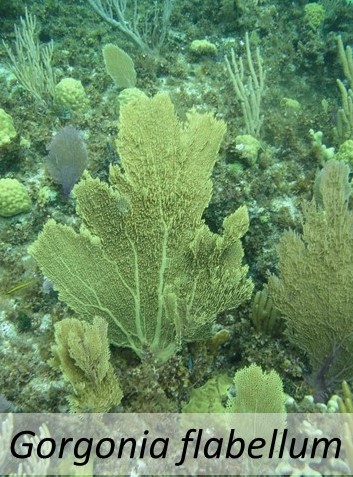
Family: Gorgoniidae
Common Name(s): Purple sea fan
Colony Form: Monoplanar fan to at least 1 m across.
Axis: Flattened at right angles to plane of fan on small ascending and interconnecting branchlets (pinnules).
Branches: Major ascending branches tapering toward tips; smaller ascending and interconnecting branchlets (pinnules) flattened at right angles to plane of fan. Meshes polygonal, squarish or irregular.
Apertures: Round or oval, chiefly on sides of small branchlets.
Mucus: None
Color: Usually yellow; sometimes lavender or grey.
Sclerites: Polyp armature: small rods rarely longer than 0.06 mm. Body wall: acute spindles to 0.14 mm long; scaphoids (curved sclerites) usually with complex tubercles on convex side, to 0.1 mm long.
Habitat: Crests and seaward slopes of shallow reefs exposed to surge, as shallow as 1 m and rare below 10 m.
Distribution: Bahamas, Caribbean Sea; uncommon in South Florida.
Notes: Fans grow perpendicular to current and oscillating flow to maximize their surface area for feeding. G. flabellum with numerous small branchlets arising from one or both sides of fan have been called form occatoria, but this has no phylogenetic significance. G. ventalina is preyed upon by several gastropods, including the ovulids Cyphoma gibbosum, Cybovula acicularis, Simnialena uniplicata, and the nudibranch Tritonia hamnerorum. G. flabellum is also infected by the fungus Aspergillus sydowii, which causes necrosis and may kill the entire fan.
Similar Species: Gorgonia flabellum; Iciligorgia schrammi





